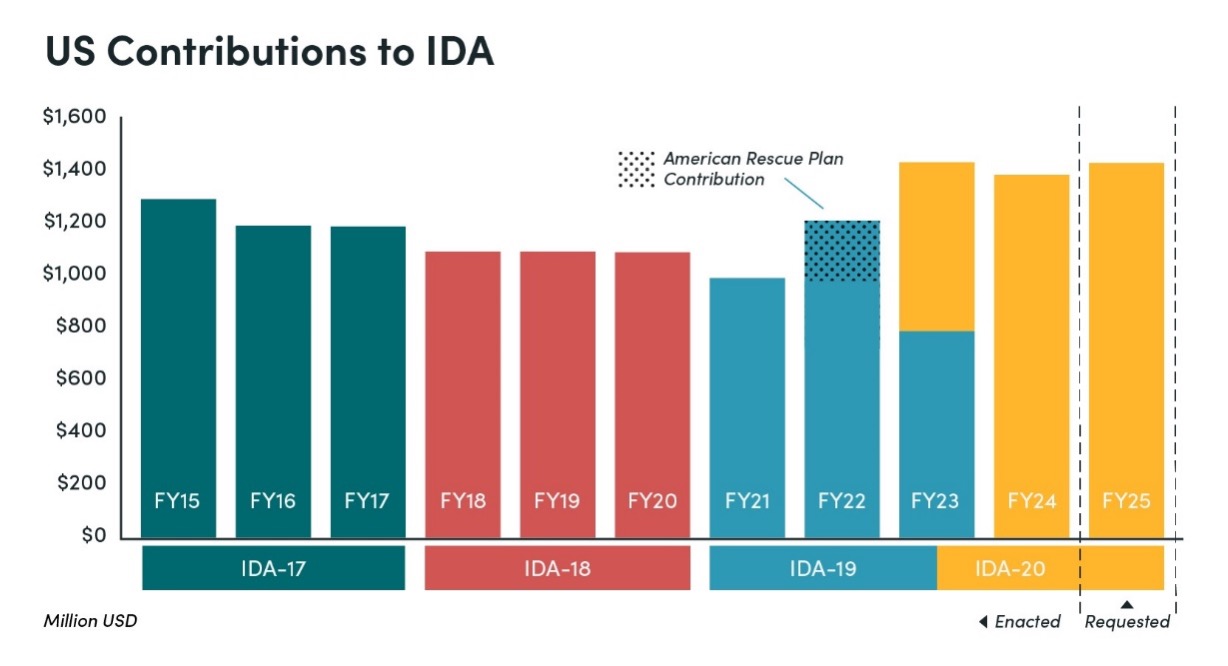Perhaps the least noticed, but most impactful, addition to the US foreign assistance toolkit in recent years has been the US sovereign bond guarantee (SBG). However, the Trump administration’s proposed FY 2019 budget leaves out any request for authorization of new SBGs—and it isn’t entirely clear why. As Congress begins to consider the FY19 budget request, I offer three recommendations on the SBG program so that its role in US foreign assistance going forward can be carefully considered.
A Brief History of SBGs
The genesis for the SBG program was a 1990 agreement for the United States to provide a 100 percent guarantee for loans made to Israel by the private sector. The proceeds were used to help pay for housing for a wave of new immigrants from the Soviet Union after it lifted its ban on emigration. The benefit to Israel was substantial since a US guarantee extended the full faith and credit of the US government to these loans, making them basically risk-free investments for creditors. This allowed the interest rate paid by the Israeli government to be much lower than in the absence of the US guarantee.
This guarantee was followed in 1993 by a much larger five-year $10 billion guarantee program for much the same purpose. The program size fell to US$9 billion in 1997 but then jumped to roughly $13 billion in 2003. In 2005, Congress agreed to authorize an extension of loan guarantees to Egypt and Turkey to provide a financial incentive for their cooperation and continued support for the war in Iraq. In the end, Egypt borrowed $1.25 billion under its $2 billion authorization but Turkey did not take up the offer.
In the wake of the Arab Spring, the Obama administration began using SBGs to support Tunisia and then Jordan. The program was extended to the Ukraine following the Russian invasion in early 2014. Most recently, the US provided a guarantee to Iraq in January 1997 for US$1 billion in bonds. In sum, there are now 19 outstanding guarantees to five different countries (Egypt fully repaid its loan in 2015), with a total credit exposure of a little over US$18 billion. This represents over half of US government foreign credit exposure to official obligors, compared to less than 10 percent at the end of 1997, as seen in the following chart:

SBGs Yield Big Benefits
As mentioned with respect to Israel, governments that receive the loan guarantees benefit from the interest rate savings. The 2017 five-year US-guaranteed Iraqi sovereign bond was priced at a coupon rate of 2.149 percent. A five-year non-guaranteed bond for the same amount issued in August 2017 carried a coupon price of 6.752 percent, roughly 460 basis points (4.6 percent) higher. In other words, on a US$1 billion issuance, the US guarantee provides a savings of $46 million per year.
And the beneficiary governments don’t have to do much in return for the financial benefit. Though the US government asserts that the provision of guarantees is conditioned upon economic policy reforms, the reality is that these reforms generally reflect conditions in pre-existing IMF or World Bank programs, and others are vague or not strictly applied. The conditions in the Iraq agreement are illustrative:
Condition #1: Iraq shall implement the economic reforms and prior actions necessary to obtain IMF Board approval for the first review of its Stand-By Arrangement (SBA). The first review had been completed one month before the US-Iraq agreement; this included waivers on a number of the conditions in the original SBA.
Condition #2: Iraq shall pay arrears to the Basrah Gas Company, as specified in the Memorandum of Economic and Financial Policies agreed to by Iraq as part of its Stand-By Arrangement with the IMF. This condition is basically superfluous since the first condition already says that Iraq is expected to remain in compliance with the terms of the SBA.
Condition #3: Iraq shall promote government financial transparency through publication of budget information including the most recent budget audit. The amount and nature of information disclosed does not seem to have substantively changed as a result of the guarantee.
Condition #4: Iraq shall commit to implement the proposed World Bank Public Financial Management Institutional Development and Capacity Building project. The loan agreement between Iraq and the World Bank had been signed the previous month.
Condition #5: As agreed to in the IMF Memorandum on Economic and Financial Policies, Iraq, acting through the Central Bank of Iraq, shall strengthen banking supervision operations. Again, rather superfluous since the first condition already says that Iraq is expected to remain in compliance with the SBA.
Condition #6: Iraq shall issue unenhanced sovereign bonds internationally no later than four months after the US guaranteed issuance. This is the only condition that effectively goes beyond what Iraq already had committed to under a different program. It did eventually issue unenhanced bonds in August 2017.
From the perspective of the United States, an SBG offers the advantage of providing financial support for a country at a de minimis cost to the US taxpayer. In accordance with the Federal Credit Reform Act, the US government must calculate the “subsidy cost” of the guarantee and “score” it against the foreign assistance budget authority. But if there is no default on the underlying bond, there is no outlay of taxpayer funds, so there is no impact on the budget deficit. It also provides an important political benefit to the United States.
It must be acknowledged that a beneficiary country may actually prefer receiving a grant that is equivalent in amount to the subsidy cost rather than the guarantee. For example, in the case of Iraq the subsidy cost was said to be over $250 million (the exact amount is not made public). This is more than the $230 million in interest savings the guarantee generates, even before the present value of the lower interest payments is calculated. However, a grant is not an option since the US guarantee is intended to set the stage for a non-guaranteed issuance.
But SBGs Have Some Big Drawbacks
There are two significant drawbacks to the SBG. One is that they are a contingent liability in the sense that in the event of a default on a bond payment, the bondholders would need to be made whole by the US government within a brief period. The United States, in turn, would become a creditor to the defaulting government and would need to seek authorization and appropriation for any cost associated with any subsequent debt treatment negotiated by the Paris Club. The other drawback is that the United States has absolutely no control over how the funds are used by the beneficiary government. In a worst-case scenario, the beneficiary government changes to one that is hostile to the United States and the proceeds of a US guaranteed bond are used to support activities or investments counter to US interests.
Recommendations to Guide the Future of SBGs
Given the potential costs and benefits of the SBG, I suggest the congressional committees with jurisdiction over US foreign assistance take the following three actions:
-
Ask the Government Accountability Office to undertake a thorough review of the costs and benefits of US sovereign loan and bond guarantees that have already been extended, and an assessment of the advantages and disadvantages of applying the instrument more broadly.
-
If the findings of the GAO report are generally favorable and Congress finds merit in continued use of SBGs, draft legislation authorizing an SBG program on a permanent basis. Such legislation could spell out the parameters for use of any guarantees as well as the institutional structure for administering and managing the program.
-
Regardless of whether the first and second actions are taken, Congress should insist that USAID report on the performance and impact of the SBG on a regular basis, in accordance with the Foreign Aid Transparency and Accountability Act of 2016. As it stands, there is no publicly available information on the extent to which the beneficiary governments are adhering to the conditions associated with the individual guarantees, nor any information on how the guarantees are benefiting the United States on an ongoing basis.
Disclaimer
CGD blog posts reflect the views of the authors, drawing on prior research and experience in their areas of expertise. CGD is a nonpartisan, independent organization and does not take institutional positions.





